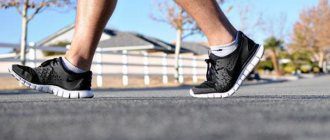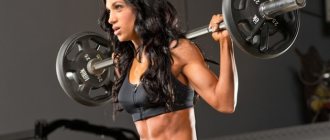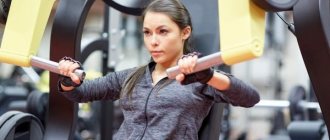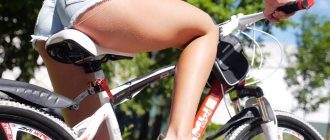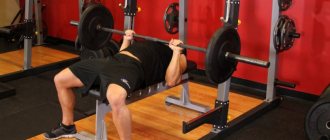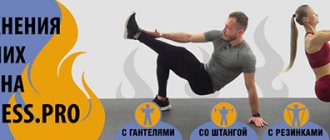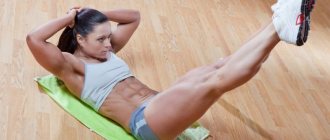Walking can replace sports for a woman or a man. When walking, all muscle groups are activated. It helps maintain vitality, improve mood and burn extra calories. Long walks improve your health and improve your immunity.
This is the best remedy for insomnia and nervous disorders . The benefits of walking in the fresh air are obvious. Thanks to the active movement of the leg muscles, blood flow accelerates and there is an intense supply of oxygen to the internal organs, which helps speed up metabolism.
You will learn how and how much to walk, the rules of walking for health and much other useful information from our material.
The benefits of walking
The beneficial properties of walking are undeniable . According to statistics, people who regularly walk are 30% less susceptible to cardiovascular diseases. They live longer and get sick less.
Walking is the best medicine for a person.
This phrase, uttered by the outstanding Greek physician Hippocrates in ancient times, remains relevant to this day.
What are the benefits of walking? Its properties are extensive:
- Strengthening the bone skeleton.
- Normalization of blood pressure.
- Reducing blood cholesterol levels.
- Muscle toning.
- Strengthening the heart muscle.
- Burning extra calories.
- Acceleration of metabolism.
- Removing toxins and waste.
- Improved coordination of movements.
- Normalization of sleep.
- Strengthening the immune system.
- Rejuvenation of the body.
- Providing vitality and positive mood.
- Increased mental abilities and brain activity.
- General improvement of the body.
Walking increases sexual desire and helps reduce the risk of genital cancer. This is the best remedy for all diseases and ailments, as well as bad mood and extra pounds.
Walking does not require any material costs or special equipment and is accessible to everyone, regardless of age or financial condition. This is a universal and best sport. It does not require any specific physical training and has no contraindications.
Which is better: running or walking?
These sports have almost identical effects on the human body. When running and walking, similar muscle groups are activated. In order to start running, you need to be physically fit and resilient. First you need to strengthen your body with regular exercise. Jogging is not recommended for overweight people, as it harms joints and heart muscle.
Hiking is recommended by all experts, does not require preparation and its benefits are enormous. An hour's brisk walking is more effective than a thirty-minute jog .
Therefore, if your physical capabilities leave much to be desired, start exercising not with a morning jog, but with walking throughout the day.
What types of walking are there?
There are many varieties of walking. Among them:
- walking in place;
- on foot;
- Scandinavian;
- sports;
- energy;
- up the steps.
Let's take a closer look at some types.
On foot
A person walks all his life, this is his physiology, unless, of course, there are serious health problems.
The main thing in this type of movement can be called gradualness and frequency. Graduation involves starting with shorter, slower walks and gradually increasing the time interval and speed.
Discounts must be made for health status and age. So young and healthy people should focus on speed of movement, and older people should focus on duration.
By frequency we should understand the preference for systematic walks, since walking “from time to time” will not bring the expected result.
The main benefit of walking is the improvement of the whole body as a whole. Walking can significantly improve your well-being and improve your quality of life.
Nordic walking
This variation consists of moving with the support of two ski-like poles. When walking, you should push off slightly from them.
A feature of Nordic walking is the involvement of most muscles, only 10% are not included in the work.
The benefits of Nordic walking are:
- improving the functioning of the heart muscle;
- enhanced ventilation;
- strengthening muscle tissue.
In order not to harm your health, you should choose the right poles. Their size is calculated by the formula: P*K, where P is the athlete’s height, and K is a constant coefficient equal to 0.68.
Race walking
This style of walking is characterized by speed. You must try to move at the highest possible speed. In this case, you cannot start running, that is, at any time one of the feet must touch the surface of the ground.
The benefits of walking in a sports style are ensured by a general strengthening effect on the body; with such movement, a person gets tired much less than when running.
Girls should pay special attention to race walking, because it helps create beautiful feminine contours of the figure.
How to walk correctly and how many kilometers should you cover daily?
There are basic rules for walking. There are only three of them. Walking should be moderate, regular and you should gradually increase the time and number of kilometers.
When walking, you need to listen to your body and general well-being, choose a moderate pace and the optimal time for walking in the fresh air. It is important to have fun and not overexert yourself, then the benefits of such walks will be colossal.
Regular walking is key. You need to walk every day for 1 hour. This is the minimum that is needed for the overall health of the body. If possible and willing, walking time should be increased to 2–3 hours a day.
Walking at an accelerated pace is an excellent cardio workout that actively burns calories. So, a 15-minute walk burns about 100 calories.
It is recommended to walk 10 thousand steps daily , which is equivalent to 8 kilometers. Not an easy path, but with years of regular walking you will cover this distance with ease.
To measure the distance traveled, you can purchase a special device (pedometer) or install an application on your mobile phone. There are wristwatches with determination of the distance traveled, a heart rate monitor and a calorie burn counter.
Walking Rules
Although walking is the safest sport, however, there are some nuances that, if not followed, can result in injury:
- The gaze should be directed forward and the chin should be parallel to the ground.
- The abs are kept in tension to avoid unnecessary stress on the back.
- When walking, bend your elbows, your arms should be free and relaxed, but you don’t need to swing them too much.
- Your posture must be correct: keep your back straight, do not lean forward or slouch.
- Walk from heel to toe.
- The shoulders, face and neck should be as relaxed as possible.
- Smile, because a good mood prolongs life.
Adviсe
You already know what muscles work when walking. Before you start this type of training, listen to some valuable tips:
- When walking at your usual pace and over short distances, the load on the muscles is minimal. Try to walk about 5 km per day, at an average speed of 6 km/h.
- The optimal walking speed often varies from person to person and depends on the person's stride length. Therefore, it is customary to calculate the walking intensity in the number of steps per minute. For example, 60 steps per minute is very slow walking, more than 140 is very fast. Special bracelets and smartphone applications can help monitor this indicator, because counting steps in your head is almost impossible. They make it easy to notice how quickly you become more resilient and stronger.
- The load needs to be increased. When you feel that it is becoming easier for you to move at a certain pace, try walking the same distance faster.
- Remember: if you want to replace walking with sports, then your walk should become a real workout. That is, your heart rate should increase, your muscles should tense, if it’s easy for you, it means that your body has adapted to the load and it needs to be increased.
- Be patient, the result will not be lightning fast. Regularity and duration of classes are the key to success and health.
- Don't forget about comfortable shoes and clothes.
- Any workout should not be done on a full stomach.
- Watch your posture; if you slouch, the benefits of walking for the spine will turn into harm.
- Try to breathe evenly, inhale through your nose, exhale through your mouth.
Forward to health and longevity!
How to learn to walk?
You need to acquire this useful habit, and it’s not difficult to do:
- Replace traveling by transport to and from work with walking . This is especially nice during rush hour. Just imagine: your colleagues are traveling in a crowded, dusty bus, late and nervous, in a bad mood. You walk to work or classes on foot, breathing in full lungs of fresh air and enjoying the surrounding nature. Get up early so as not to be late and have a good walk before the work day.
- Avoid using the elevator in favor of taking the stairs . This is a very effective remedy for cellulite and fat deposits on the thighs and buttocks. Women will appreciate it.
- As you know, it takes 21 days to develop a habit, so force yourself to walk regularly for three weeks and this activity will give you pleasure.
- Choose picturesque places for walks , avoiding roadways and dusty highways. Breathing polluted air is unpleasant and harmful, so walk through parks and alleys, choosing quiet streets with green areas.
- Walking shoes should be comfortable and comfortable . It is unlikely that you will want to walk in patent leather shoes with fifteen-centimeter stiletto heels. Such a walk will seem like a living hell to you. Therefore, it is recommended to wear the most comfortable shoes possible. The ideal option would be running shoes.
- Teach all family members to a healthy habit . So that you don’t get bored while walking, involve your husband and children in this activity. Then your walks will not only be healthy, but will also be a wonderful time spent with your family in the fresh air.
- Increase your sexual desire and arousal . Walking in the fresh air contributes to a rush of blood to the pelvic organs in both men and women, therefore restoring sexual desire and initial attraction. Sexual relationships are very important for people's health, so if you lose sexual desire, you should take a walk in the fresh air before going to bed.
How many muscles work when walking?
A newborn person cannot walk for a year or a little more, because for this process it is necessary to first develop more than 200 muscles, as well as learn to use them.
During walking, there are two phases - transfer and support, in which the following muscles actively work:
- lumboiliac;
- biceps femoral;
- ischiofemoral;
- toe extensors;
- gluteus maximus;
- quadriceps femoral.
But the leg muscles are not the only ones that take part in the movement process. To hold the human body in an inclined position when moving the leg, the following muscles contract:
- trapezoidal;
- latissimus dorsalis;
- rhomboid dorsal;
- straightening the spine;
- longest dorsal
During a backward step, the following muscles tense:
- straight abdomen;
- external oblique abdomen;
- internal oblique abdomen;
- transversus abdominis;
- square loin.
While walking, a person also moves his upper limbs, and the following muscle groups are involved:
- anterior deltoid;
- pectoralis major;
- coracobrachial;
- biceps brachialis;
- subosseous;
- small and large round;
- shoulder;
- elbow and many others.
Reference! When walking, the body uses about 200 of the 656 muscles.
Walking up the stairs
It has the same properties as walking, but it fights excess weight more effectively and allows you to gain a slender and appetizing shape. It tones the body, tightens the buttocks, makes the legs slender and beautiful.
If you live in a multi-story building , walk up and down the stairs. Start with small loads, based on how you feel. Breathing should be uniform and calm, heartbeat should be slightly accelerated. If pain appears in the calf muscles and tingling in the right side, training should be stopped.
To increase endurance and develop physical abilities, you need to train regularly. It is optimal to walk up the stairs every other day. The muscles will have time to recover during this time and pain will be minimal.
Regular walking on stairs is as good for your health as walking. This is a universal and best sport available to each of us. You just have to show a little determination and stop using public transport to prolong your life and improve your health.
The effectiveness of walking for burning calories
The higher the inclination angle, the greater the load the main muscle groups receive. Under an inclination, work is performed, the force vector of which differs from the direction of gravity.
The table presents calculated data during walking on an inclined surface.
| Distance (distance), m | Angle of inclination of the running belt, degrees | Energy consumption, kcal | |||||
| User weight, kg | |||||||
| 60 | 70 | 80 | 90 | 100 | 110 | ||
| 1500 | 1 | 3,96 | 4,95 | 5,5 | 6,05 | 6,6 | 7,15 |
| 1500 | 3 | 11,52 | 14,4 | 16 | 17,6 | 19,2 | 20,8 |
| 1500 | 5 | 18,72 | 23,4 | 26 | 28,6 | 31,2 | 33,8 |
| 1500 | 10 | 37,44 | 46,8 | 52 | 57,2 | 62,4 | 67,6 |
| 3000 | 1 | 7,92 | 9,9 | 11 | 12,1 | 13,2 | 14,3 |
| 3000 | 3 | 22,32 | 27,9 | 31 | 34,1 | 37,2 | 40,3 |
| 3000 | 5 | 38,16 | 47,7 | 53 | 58,3 | 63,6 | 68,9 |
| 3000 | 10 | 74,88 | 93,6 | 104 | 114,4 | 124,8 | 135,2 |
| 5000 | 1 | 11,52 | 14,4 | 16 | 17,6 | 19,2 | 20,8 |
| 5000 | 3 | 34,56 | 43,2 | 48 | 52,8 | 57,6 | 62,4 |
| 5000 | 5 | 56,88 | 71,1 | 79 | 86,9 | 94,8 | 102,7 |
| 5000 | 10 | 113,04 | 141,3 | 157 | 172,7 | 188,4 | 204,1 |
| 8000 | 1 | 19,44 | 24,3 | 27 | 29,7 | 32,4 | 35,1 |
| 8000 | 3 | 57,6 | 72 | 80 | 88 | 96 | 104 |
| 8000 | 5 | 95,04 | 118,8 | 132 | 145,2 | 158,4 | 171,6 |
| 8000 | 10 | 187,92 | 234,9 | 261 | 287,1 | 313,2 | 339,3 |
| 16000 | 1 | 38,16 | 47,7 | 53 | 58,3 | 63,6 | 68,9 |
| 16000 | 3 | 113,76 | 142,2 | 158 | 173,8 | 189,6 | 205,4 |
| 16000 | 5 | 189,36 | 236,7 | 263 | 289,3 | 315,6 | 341,9 |
| 16000 | 10 | 376,56 | 470,7 | 523 | 575,3 | 627,6 | 679,9 |
